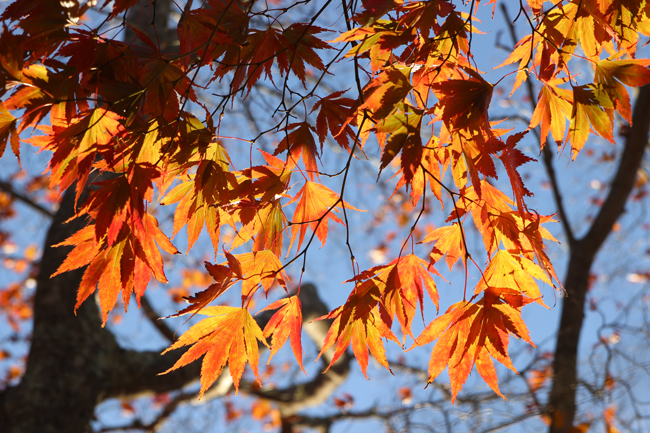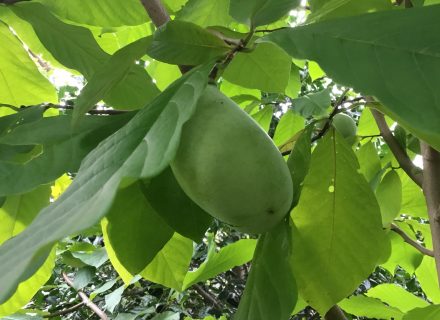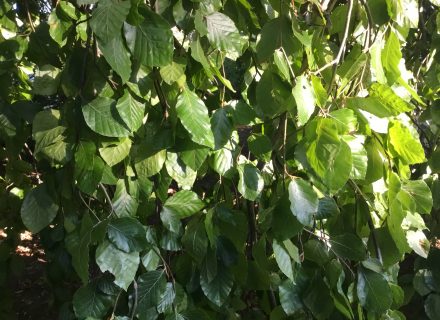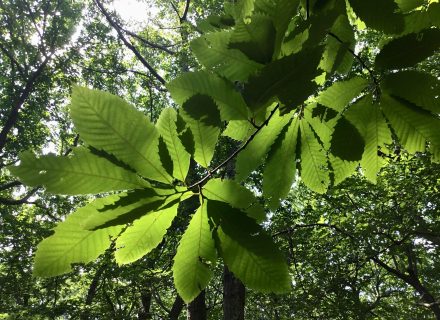Latin name: Acer palmatum
Locations: Japanese maples are ubiquitous on Shelter Island. A tree on a property at the corner of North Midway and Bateman is pleasingly voluminous in the summer, vividly colored in the fall, and still shapely in the leafless winter.
“Wow!” color: When most of our deciduous trees have peaked or lost their leaves, the Japanese maple persists with vibrant shades of orange, yellow, green, brown, and purple, sometimes all on the same tree. I recommend walking under one on a sunny day and gazing up at the backlit leaves. It’s a visual treat.
The source of that color: When the days get shorter and temperatures start to drop, trees stop manufacturing chlorophyll, the green pigment in leaves that converts sunlight into food. As the chlorophyll retreats, it’s replaced by yellow and orange pigments that were there all along. Anthocyanins, which are produced in the fall, add the reds and purples. The variations in color from year to year depend upon soil moisture, autumn temperatures, and rainfall.
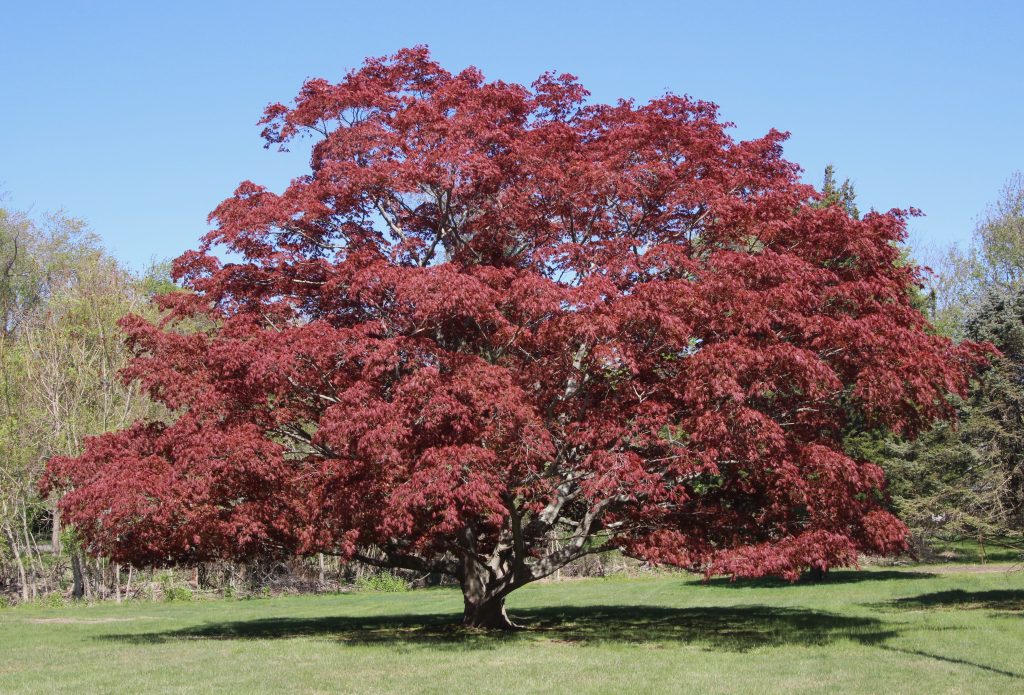
A revered tree: For centuries the Japanese maple has been integral to the country’s culture. The tree or its leaves are depicted often in woodblock prints, most notably in Hiroshige’s “Maple Trees at Mama” from his series “One Hundred Famous Views of Edo.” And while we enjoy fall foliage outings for pleasure and candied apples, the Japanese can regard the annual viewing, which they call “maple tree hunting,” as a time-honored spiritual experience.
A perfect tree: By the 19th century there were numerous named maple cultivars in Japan that were planted in cities, temples, and gardens. They were also grown as bonsai plants. Though many of these specimens were lost during WWII, interest in the species continued and now there are hundreds of varieties available to fit all types of gardens and landscapes. It’s possible to create a maple grove combining trees of different sizes, textures, and leaf color. You can also mix them with perennials and compatible shrubs and trees. Just be sure to determine their ultimate growth so they aren’t hindered by surrounding vegetation. The choices are dizzying but, unlike most dilemmas in life, this is a fun one to have.
Photos: Tim Purtell

